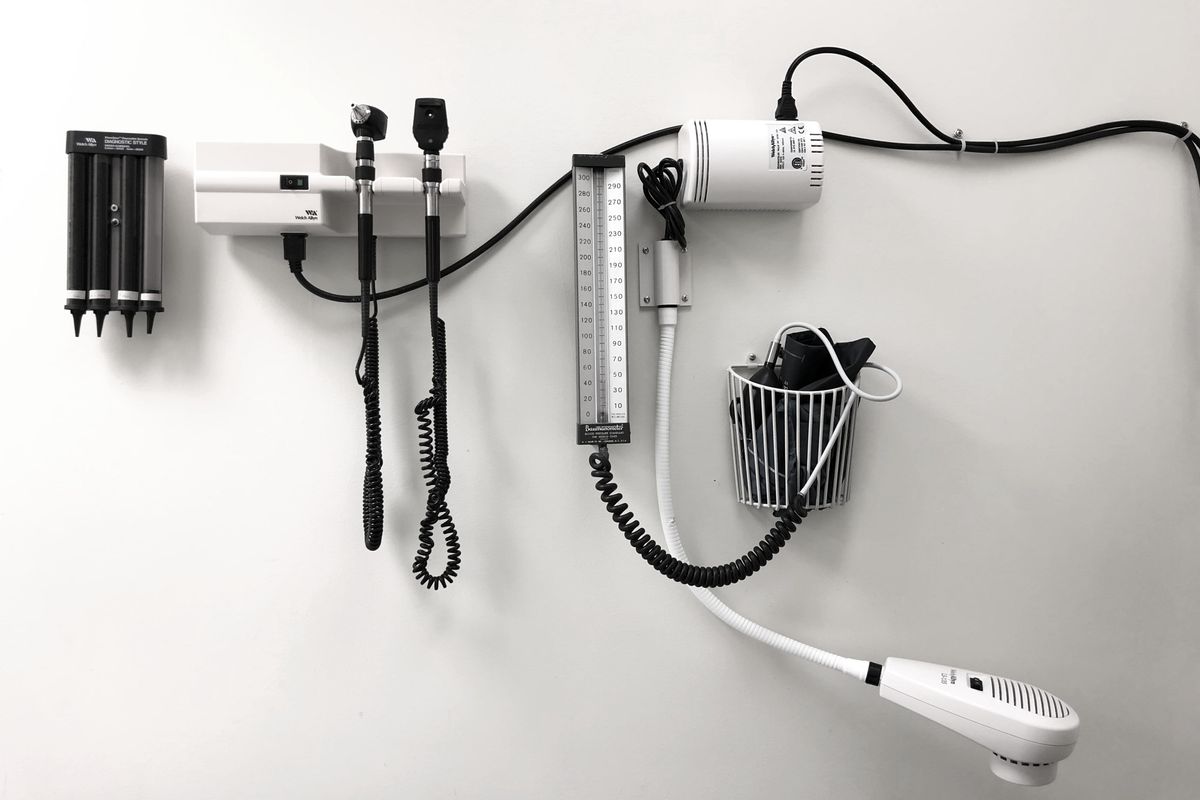
As new employees join your team, providing them with a well-structured and comprehensive training plan is essential for their success and the long-term growth of your business. Crafting a thoughtful and effective training program not only accelerates the onboarding process but also sets the stage for new hires to excel in their roles. How can you create a training plan that equips your new talent with the knowledge and skills they need to thrive?
We recently asked our leading executives for their best tips on how to develop a training plan for new employees.
Here are their responses…
Melodie Turk, Learning Experience Executive
New employees are excited and eager to jump in and itâs important to give them the opportunity to do so. Providing a solid training plan over their first year will provide a strong foundation to help with their success.
As new employees generally have more time than any other employee, I recommend building a training plan they can control and lead. This means building a guided framework they can easily navigate while they build their knowledge pool. This framework should not overwhelm the new employee, but build upon itself so their knowledge gets deeper as the year progresses.
Hereâs an example.
When setting up training regarding the organization, you might set it up this way:
- In their first week, search the intranet and internet to find out the organizationâs mission, vision, and core values.
- In their first month, search the intranet and internet to find out the organizationâs mission, vision, and core values and bookmark key links you can use for later reference.
- At the 90-day check-in, review your bookmarked links and ask your supervisor how the organizationâs mission, vision, and core values drive the departmentâs priorities.
- At the 6-month check-in, review your bookmarked links and prepare to share with your supervisor how the organizationâs mission, vision, and core values drive your own work and discuss how other priorities may impact that work.
- At the annual check-in, review your bookmarked links and prepare to share suggestions on how to further support the organizationâs mission, vision, and core values in your own work and what support you may need to make that happen.
In each instance, the employee is given a task that starts out relatively small and increases in thought and knowledge.
Each training plan should cover compliance training and then organizational, departmental, and personal areas.
Organizational areas may include the history of the organization, its mission, vision, and values. Learning about them may be as easy as searching the intranet or it may be scheduling time with a few key people who have been with the organization for some time. It may even include a visit to an archive location.
Departmental areas may include strategic goals, dashboards, and reportsânot just where they are located, but the context behind them, as well as how to interpret them. This may include guiding the new employee to schedule time with certain people or to watch a video to gain this knowledge. This area may also include certain training to help employees learn how to actually input and navigate different systems they will use.
Personal areas might include cultural norms and behaviors. This may look like a scheduled meet and greet with other employees (with guided questions) to discover how the culture of the organization looks and works. It may include reading through a company blog or watching CEO town halls. It may even be as simple as a PowerPoint sharing key aspects of the culture.
Developing a training plan for new employees is best done with other employees. They will help give you the best insight into what they wish they had known and when.
Melodie Turk is a learning experience executive with a unique background in the learning and development arena as well as change management. She is passionate about bringing change to the workplaceâchange that is meaningful and change that will last.
Michael Willis, Sports Business Operations Executive

Step 1: Identify Training Needs
- Begin by conducting a thorough assessment of your organization’s needs. Determine what skills and knowledge are essential for new employees to excel.
Step 2: Set Clear Objectives
- Define specific, measurable objectives for the training plan. What should new employees achieve by the end of their training? Ensure these objectives align with your business goals.
Step 3: Design the Curriculum
- Create a detailed curriculum that covers all necessary topics and skills. Divide it into modules or sections for clarity. Each module should contribute to achieving the defined objectives.
Step 4: Choose Training Methods
- Select the most appropriate training methods for each module. Options include classroom training, e-learning modules, hands-on workshops, and mentorship programs. Tailor your choices to suit your employees’ content and learning styles.
Step 5: Develop Training Materials
- Create or source training materials such as presentations, manuals, videos, or online resources. Ensure these materials are well-structured and engaging to facilitate effective learning.
Step 6: Assign Trainers or Facilitators
- Appoint experienced trainers or facilitators who can effectively convey the training content. These individuals should have expertise in the subject matter and possess strong communication skills.
Step 7: Schedule Training Sessions
- Plan the training schedule, considering the availability of trainers and new employees. Ensure that the timeline aligns with business needs and employee onboarding processes.
Step 8: Implement Training
- Execute the training plan as scheduled. Provide employees with access to training materials and resources. Encourage active participation and engagement throughout the training.
Step 9: Assess Progress
- Regularly assess the progress of new employees through quizzes, assignments, or practical assessments. Use feedback to identify areas needing additional attention or modifications to the training plan.
Step 10: Provide Feedback and Support
- Offer constructive feedback to employees to help them improve. Create a supportive environment where questions are encouraged and challenges are promptly addressed.
Step 11: Monitor and Adjust
- Continuously monitor the effectiveness of the training plan. Analyze the impact on employee performance and adjust the program to address gaps or changing business needs.
Step 12: Measure ROI
- After completing the training, measure the return on investment (ROI) by evaluating how well the new employees contribute to the organization. Assess their performance against the initial objectives.
Step 13: Iterate and Improve
- Use the insights gained from the training process to improve future training plans. Learning is an ongoing process, and each iteration should be better than the last.
Developing a comprehensive training plan for new employees is a strategic investment in your organization’s success. By following these steps, you can ensure your employees are well-equipped to excel in their roles, contribute to business growth, and drive overall success.
Michael Willis has 18+ years of experience working with accounting & sports organizations and has managed P&Ls of $10M – $125M+ with budgets of $3M-$50M+. He worked for the NFL for 22 1/2 years, mainly with the game officials working on the financial/accounting side of the business.
Ana Smith, Leadership Development & Learning Strategist

Crafting an effective training program for new employees is key for retaining talent. In today’s dynamic workplace, ensuring that your team is well-prepared from day one is crucial for their success and your organization’s growth. A well-structured training program not only accelerates the onboarding process but also sets the stage for long-term productivity and job satisfaction. In this blog post, we will walk you through the essential steps to create an effective training program that empowers your new hires to thrive.
1. Define Your Objectives
Before you can start building a training program, it’s essential to clearly define your objectives. Ask yourself:
- What specific skills and knowledge do new employees need to excel in their roles?
- What are the key performance indicators (KPIs) that will indicate a successful onboarding process?
- How will this training program align with the company’s goals and values?
Defining these objectives will serve as a roadmap for designing your training program.
2. Identify Target Audiences
Not all employees have the same needs or roles within your organization. Segment your new hires based on their job functions, experience levels, and backgrounds. This allows you to tailor the training content and delivery methods to meet each group’s unique requirements. For example, a salesperson’s training will differ significantly from that of a software developer.
3. Create an Engaging Curriculum
Once you know your objectives and your audience, it’s time to develop the curriculum. Here’s how:
- Determine Learning Outcomes: Clearly outline what employees should know or be able to do after completing the training program.
- Content Creation: Design the content around these learning outcomes. Use a mix of formats such as videos, written materials, interactive modules, and hands-on exercises to keep the training engaging.
- Sequencing: Arrange the content logically, starting with foundational concepts and gradually moving to more complex topics.
- Assessment: Include assessments, quizzes, or assignments to evaluate employees’ understanding and progress.
4. Choose the Right Delivery Methods
Consider the most effective methods for delivering your training content:
- Instructor-Led Training (ILT): Ideal for hands-on or complex training, ILT involves a live instructor leading a class.
- E-Learning: This method includes web-based training, videos, and interactive modules that employees can complete at their own pace.
- On-the-Job Training (OJT): For roles that require practical skills, OJT involves new employees shadowing experienced colleagues.
- Blended Learning: Combines multiple delivery methods for a holistic learning experience.
Select the methods that align with your objectives and audience needs.
5. Develop Training Materials
Create or curate the training materials. Ensure that they are well-organized, up to date, and easily accessible to employees. Consistency in formatting and style will enhance clarity and usability.
6. Establish a Training Schedule
Determine the timeline for the training program. Will it be a one-week intensive program or a longer, phased approach? Communicate this schedule to your new employees so they can plan accordingly.
7. Training Delivery and Evaluation
Now, it’s time to roll out your training program. During this phase:
- Training Delivery: Ensure that trainers are well-prepared and engaging. Make resources available for self-paced learning if applicable.
- Feedback Mechanism: Collect feedback from both trainers and trainees to continuously improve the program.
- Regular Assessments: Evaluate the effectiveness of the training program at predetermined intervals.
8. Monitor Progress and Adjust
Keep a close eye on your new employees’ progress as they complete the training program. Adjust the program as needed to address any identified gaps or areas of improvement.
9. Gradual Integration
After completing the training, facilitate a smooth transition into employees’ regular roles. Continue to offer support and mentorship as they apply their newfound knowledge and skills.
10. Continuous Learning Culture
Encourage a culture of continuous learning within your organization. Provide ongoing training opportunities and resources to help employees grow in their roles and stay up to date with industry trends.
In conclusion, developing a training program for new employees is a strategic investment that pays off in the long run. It not only equips your team with the skills they need but also fosters a sense of belonging and commitment to your organization. By following these steps and remaining adaptable to changing needs, you can create a training program that sets your employees up for success and helps your company thrive in today’s competitive landscape.
Ana Smith helps people & organizations achieve their full talent potential by developing and co-creating people strategies and customized solutions, and turning them into impactful outcomes and collaborative relationships, using coaching as the “red thread.”
Lisa Perry, Global Marketing Executive

I’ve had the privilege of experiencing one truly exceptional onboarding and new-hire training program in my career. It began with my future boss’s welcoming email, excitement about my upcoming start, and her eagerness to have me join the team. Little did I know that this was just the beginning of an onboarding journey that would set the gold standard for welcoming new employees.
My first day was unlike any other. The office felt inviting, adorned with a beautiful plant, and a fun gift basket with company-branded goodies awaited me. My desk was thoughtfully arranged with everything I needed, from a computer to supplies. This warm reception left a lasting impression, marking the start of a well-structured process designed for my success.
The onboarding experience continued seamlessly with a structured two-day training program. I immersed myself in the company’s culture, completed HR paperwork, and became familiar with essential organizational guidelines and processes. This comprehensive introduction laid a strong foundation for my journey with the company.
What truly made this onboarding exceptional was the people. My boss, who had sent that initial email, became my guide. She introduced me to the marketing team, fostering connections from day one. My journey continued with department visits, introductions to key stakeholders, and active participation in meetings and ongoing projects.
Reflecting on this extraordinary onboarding experience, it becomes evident why it left such an indelible mark. I felt genuinely welcomed and valued when I walked through the door. This positive and inclusive start set the stage for my confidence and subsequent success in my new role.
Here are five key strategies for developing a new hire training plan that goes beyond the basics, ensuring that new employees feel welcomed and equipped with the tools and knowledge needed to thrive:
- Set Expectations: Begin by defining the role and expectations from day one. A well-crafted job description and initial discussions with new employees about their responsibilities, goals, and 30-day expectations will help them understand their role.
- Introductions: Facilitate meaningful introductions to colleagues, teams, and key stakeholders. Organize team-building activities or events to help new hires forge connections, feel part of the team, and know who to contact. Highlight the importance of collaboration within the organization. Assign a mentor or buddy to help them navigate their initial days.
- Onboarding: Make the first few days memorable. Welcome new employees with a warm and organized orientation process. From administrative tasks such as filling out forms, setting up email accounts, and arranging direct deposit for paychecks, as well as the opportunity to immerse oneself in the companyâs mission, vision, goals, culture, policies, and best workplace practices. This multifaceted approach ensures that new employees not only complete essential paperwork but also gain a deeper understanding of the organization.
- Training: Develop a structured training program that covers essential job skills, equipment usage, information access guidance, job shadowing, performance standards, and company processes. Offer in-person, online, and hands-on training to accommodate different learning styles. Encourage questions and feedback throughout the training process.
- Support System: Establish a strong support system for new employees. Encourage regular check-ins between managers and their team members to address questions and concerns. Create an open-door policy to foster open communication. Provide employees with readily accessible resources for ongoing inquiries.
By implementing these strategies, you can create an onboarding and training program that welcomes new hires and empowers them to excel within your organization. If you found this helpful, I invite you to explore my book How to Develop a Brand Strategy and insightful brand marketing articles.
Lisa Perry helps companies drive revenue by using consumer trends, insights, and data analytics to innovate their approach to marketing.
How do you successfully train new employees? Join the conversation inside Work It Daily’s Executive Program.
























 Lindsey Pollak
Lindsey Pollak






















































